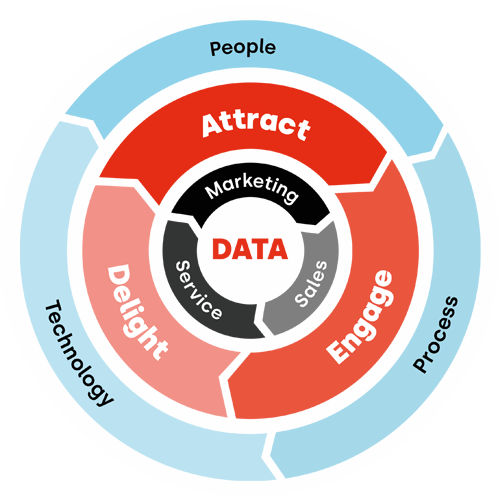From traditional to modern CMS: step out of the silo
In partnership with Emerce - B2B buyers do their research online, making the importance of a company website greater than ever. A modern CMS is integrated into the marketing and sales platforms, allowing the organization to focus on the customer and generate leads efficiently. The website is integrated into the commercial process. With intuitive drag-and-drop interfaces, among other things, sales and marketing teams create content in no time and easily customize content.
For years, picking a CMS (content management system) was a task for the IT department. Meanwhile, B2B organizations are more focused on sales. It is important for sales and marketing teams to be able to customize and tune Web content to attract and convert leads. So companies are increasingly looking for a CMS that acts as an extension of their sales and marketing platforms.
It pays to take a moment to reflect on the evolution of marketing and technology to understand what a CMS can do for a sales-focused organization.
Being findable online: then and now
In the early days of the Internet, if companies wanted to be found online, their IT manager would take care of all the technical aspects of getting a Web site up and running. This was usually a time-consuming and costly exercise. The (non-digital) marketing department had to brief the technical designer and Web developer. It took a lot of time and project management to get the job done. The design, functionality, data collection and even the analytics and tags all had to be coded manually. Last-minute changes to the copy or design landed you with angry looks. Companies often viewed the Web site as an extended extension of the brand. Visitors were presented with the same customer journey.
Today, you can build a website in minutes using a drag-and-drop template. With ready-made widgets, you easily add forms, surveys, personalization and localization. Landing pages and dynamic content allow you to quickly tailor the user journey to a specific visitor segment.
Your website as a growth engine
The corona crisis has only increased the need for companies to use their websites as growth engines, rather than as glorified digital brochures. B2B buyers do their own research online first. Before they invest time in direct contact with a sales representative, they have already compiled a specific consideration set. Such inbound leads are worth gold because they are qualified. Moreover, they are cost-saving because they have qualified themselves with their online research.
Before corona, a salesperson could look up a company's phone number, call the front desk and be connected to the buyer to make a sales call. Now that many people work from home, cold acquisition in B2B is almost impossible to do. Also, trade shows and conventions are almost non-existent. A sales talk with casual passers-by is no longer an option. Conversation opportunities are now much later in the sales process. The Web site is often the most important, if not the only, point of contact in the buying journey. Although salespeople are usually not really concerned with the website, they do realize that the website supports, enhances or even completely replaces their interaction with the customer. A Web site as a digital signboard is no longer enough. A good website is flexible, scalable and brings in sales.
From traditional to modern CMS
A traditional CMS is the domain of the IT department. It works with Drupal, WordPress or a custom platform. For this, you need service level agreements for hosting and software updates. These solutions require great technical responsibility from an expert IT team. Managing plug-ins, security patches, technical documentation and content updates takes a lot of time. Functionalities must be coded internally or through a plug-in. These must be extensively researched, tested and implemented. If you want to integrate multiple platforms, you need to develop an API, and create documentation. Then you can test the API and continue to actively manage it.
A modern CMS is integrated with the marketing and sales platforms so that the organization can focus on the customer. The website is integrated into the commercial process. With intuitive drag-and-drop interfaces, among other things, sales and marketing teams create content in no time and customize content easily. CRM integration means leads are collected and the sales rep has insight into website visitor behavior. A modern CMS, of which HubSpot is a great example, is offered as SaaS (software as a service), so you no longer have to install patches or updates. Since the hosting is in the cloud, you also get rid of servers and hosting agreements. The provider also continuously improves security, speed and functionality.
This transition from a traditional to a modern CMS allows organizations to move from silo thinking to working as an integrated team. IT focuses on business-critical problems instead of updating copy. Sales and Marketing focus on creating customer journeys that drive sales. And the biggest benefit: You can accurately track ROI.

Want to get the most out of HubSpot? Subscribe to our newsletter, follow us on LinkedIn, or attend our HubSpot User Days!
Explore HubSpot User DaysShare this
You May Also Like
These Related Stories

From sales funnel to modern marketing flywheel: switch?

Will we finally put the buyer at the center of our sales?


